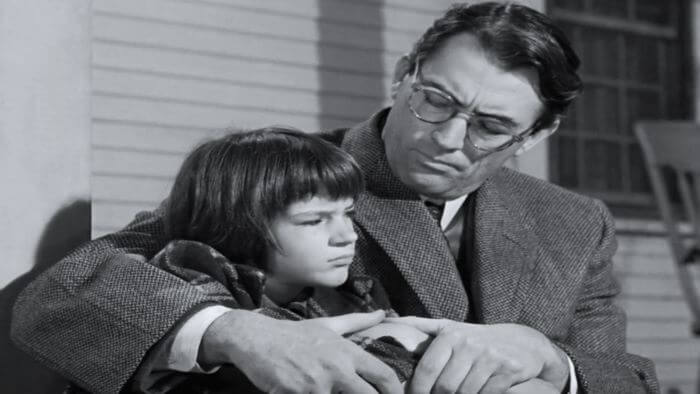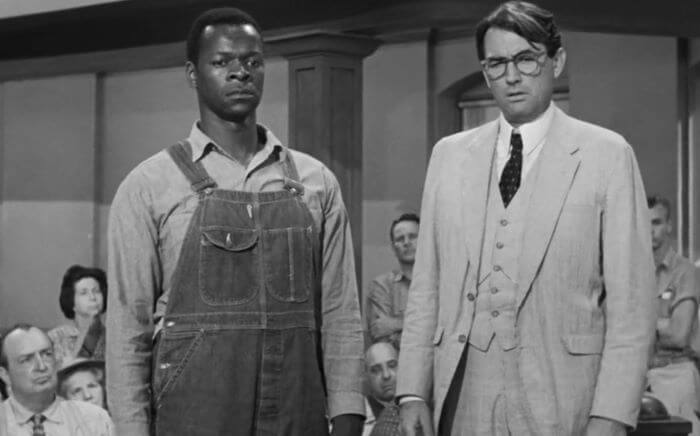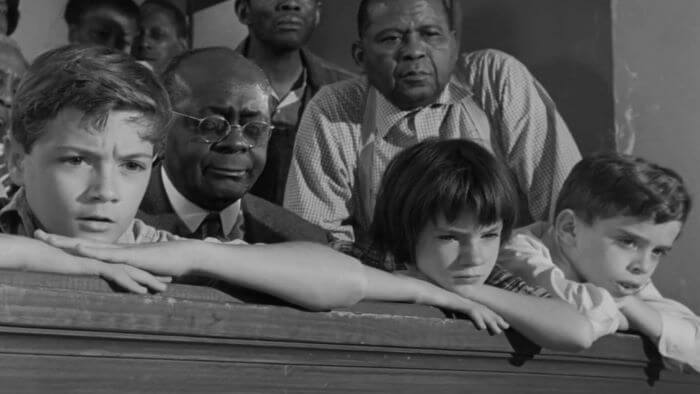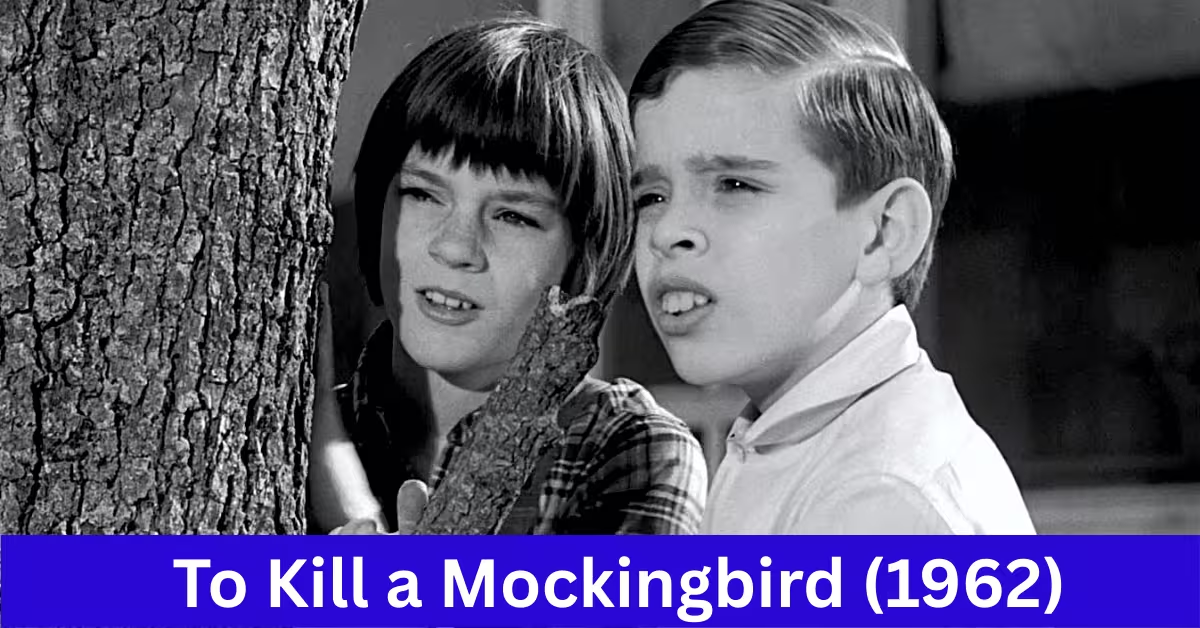Last updated on May 10th, 2025 at 08:36 am
To Kill a Mockingbird 1962 film is based on Harper Lee’s novel of the same name. The film depicts a white lawyer who took the case of a black man, Tom Robinson, who was alleged to rape a white girl. Being a single parent to two children, the lawyer stood against the code and convention of white society risking the life of his children and him.
Acted by Brock Peters (as Tom Robinson), Paul Fix (as Judge Taylor), Gregory Peck (as Atticus Finch), Frank Overton (as Sheriff Heck Tate), Mary Badham (as Scout Finch), Collin Wilcox (as Mayella Violet Ewell), Phillip Alford (as Jem Finch), and others.
To Kill A Mockingbird 1962 is one of the 100 films of 100 years according to the American Film Institute; the 34th greatest movie according to the American movie community; was included in the Complete National Film Registry Listing of the Library of Congress in 1995. To Kill a Mockingbird 1962 is one of the 101 best educative films I have been reviewing.
Compared to the book, To Kill a Mockingbird 1962, the film only has a brief portrayal of it. As a father and layer with principle, Atticus Finch, took the case when offered by the Judge of Maycomb County. For which he and his children had to endure harsh criticism and vilification from mainstream white society.
The film captures only the process of the trial along with a little touch of Jem and Scout’s, Atticus’ children, and their friend Dill’s life. Even though most of the characters are portrayed in the film, the book contains additional characters like Jem and Scout’s aunt Alexandra and her missionary society, their teacher Miss Caroline Fisher and many more.
Storyline: To Kill a Mockingbird 1962
One morning Dill showed up in Jem and Scout’s yard while Jem and Scout were on their treehouse. Dill is from Meridian and came to Maycomb to spend summer vacation. They told Dill about Boo Radley, who was chained inside the house by his father.
His father thought it would be better for them to chain him, instead of sending him to asylum. Jem pleaded with Atticus to play football with the Methodist team, which he refused, saying he is too old to play football.
That night John Taylor, the judge of Maycomb County came to their house to request Atticus to take the Tom Robinson case. He agreed.
The next day was Scout’s first day at school. She said she didn’t want to go to school anymore because her teacher Miss Caroline Fisher told her that she was too ahead for her grade and that whoever was teaching her must stop so she can repair the damage done by Atticus by reading and teaching her at home.

The same day Heck Tate, Sheriff of the County, transferred Tom Robinson from Abbostville jail to the courthouse for trial the next day. To protect Tom from the hands of angry white people Atticus seat guarded the jail gate at night where the trio, Jem, Scout and Dill, followed him where the mob threatened Atticus to move away from the door. With the intervention of children, the mob Tom alone.
With a jury consisting of white folks, the court went into session for trial the next day. The trio managed to get into the audience balcony with the help of Reverent Sykes without Atticus’ knowing.
Sheriff Hack Tate testified to the court that when Mayella Violet Ewell’s father saw his daughter ‘mighty beat up’, he called for Sheriff. Sheriff noticed a scare on Mayella’s right eye and said she was ‘mighty beat up.’ Then the sheriff arrested Tom and put him in jail.

Her father, a second witness, said when he got back in the evening, he saw his daughter ‘mighty beat up’, raped. He asked ‘who done it?’, she said Tom Robinson.
Mayella testified that she called him inside the fence to bust the chifforobe. After busting when she went inside for a nickel for Tom she found him around her, and before she realised he went on her, had her around the neck, hit her repeatedly, choked her, and took advantage of her. But hesitated to remember being bitten on her face by Tom. She mumbled and said yes, he hit her in the face.
Then Atticus threw an empty glass at Tom to make him catch it. Tom caught it with his right hand, and Atticus asked if he can do the same thing with his left hand. Tom said he cannot because he could not his left hand since he was twelve years old. “All my muscles tore loose,” Tom said. Atticus proved that Tom could not hit her, and certainly, it was not Tom to him her, someone else must be her father.
As the last witness Tom said on the 21st of August evening, she called him in to fix a door. He said he was allright. Then called him inside the house to get the box from the top of the chifforobe. When he tried to reach the box Mayella grabbed his legs so badly that he fell and turned over the chair.
Then she grabbed his waist started kissing him and asked him to kiss her back. He tried to run and saw Mr Ewell cussing from the window. He said, “I am going to kill you”. Tom said he did not rape her, nor harmed her anyway.
The state layer, Mr Gilmer, asked Tom why he did help her for nothing. Tom said he felt sorry for her. Because she had none to help her. Mr Gilmer was surprised to hear from Tom that he felt sorry for a white woman.
As a prosecutor to Tom, Atticus started saying that the state did not present any medical evidence to the case, and told the court that the crime Tom Robinson was charged with never took place.
He elaborated the reason why she brought the charge against him (partly taken from the book To Kill A Mockingbird), “The defendant is not guilty, but somebody in this courtroom is.” As to the reason why she said he raped her and put his life at stake was because she wanted to get rid of her own guilt.
The guilt motivated her. She was guilty of breaking a rigid and “time-honoured”, or long-established code of their society, a code so severe that whoever breaks it is hounded from their midst as unfit to live with.
Atticus figured that she was the victim of cruel poverty and ignorance, and race. “She knew full well the enormity of her offense, but because her desires were stronger than the code she was breaking, she persisted in breaking it…She did something every child has done— she tried to put the evidence of her offense away from her, he must be removed from her presence, from this world. She must destroy the evidence of her offense”.
“She must put Tom Robinson away from her, he continued. “Tom Robinson was her daily reminder of what she did. What did she do? She tempted a Negro.” A crime of passion cannot be tolerated in white society. A white woman must not tempt a Negro, which in her society is unspeakable.
Nevertheless, no code mattered to her before she broke it, but it came crashing down on her afterwards.
Presumably, nothing mattered to the jury, constituted by white folks. The jury charged him with the first-degree crime based on circumstantial evidence by two white witnesses.
The evil assumption of white men “that all Negroes lie, that all Negroes are basically immoral beings, that all Negro men are not to be trusted around our women, an assumption one associates with minds of their calibre’, proved true. Atticus finished by urging the Jury to reconsider the case and believe Robinson.
As an ideal father when answering his children’s questions regarding injustice in the course Atticus said, “In our courts, when it’s a white man’s word against a black man’s, the white man always wins. Frustrated, Atticus, Jem, Scout and Dill got back home.
Tom Robinson was convicted a first-degree crime, who was to be chaired. Was sent to Enfield Prison Farm, where his wife and children were not allowed to visit him.
Unfortunately, making matters worse, Tom was killed when he was being taken to Abbotsville for safe keeping when he broke loose (the book mentions that he was killed by the guards while he madly broke into the fence and started climbing over right in front of them during their exercise period). The deputy shot him to wound but missed his aim and it killed him.

Bob Ewell spat Atticus on his face and tried to kill Jem and Scout on Halloween night when were coming back from the pageant at the school house. Bob failed in his mission as Boo Radley ran to their help and intervened. Unconscious, Boo carried Jem to their home. Atticus informed the Sheriff. Sharrif found Bob lying dead on the ground with a kitchen knife stuck up on his ribs.
Apparently, Atticus, thought Jem had killed him in self-defence and was thinking to the present the matter to court. But the Sheriff said Jem did not kill Bob, he fell on the knife killing himself. He promised to handle the case himself.
To Kill A Mockingbird 1962 ends with a narration, “Neighbours bring food with death and flowers with sickness and little things in between. Boo was our neighbour. He gave us two soap dolls, a broken watch and chain, a pair of good-luck pennies, and our lives.
Verdict
To Kill A Mockingbird 1962 Is such a piece that one would not get bored watching it, no matter how many times. Along with a sharp reminder of our devilish and inquisitive childhood, it shed a bigger chunk of light on social injustice committed by white people, and how badly black people were treated in white people’s world.
Even though, the film is a little bit different from the book, it has different things to fall for, such as the wonderful portrayal of the neighbourhood ambience, Atticus’s affection for his children and his mouthful-heavy voice. I will not grow tired of hearing his voice during the prosecution in court.
I loved the accent they used in the film, devoid of localised accents and syntaxes. The book is full of them. But I still recommend the book for a deeper understating of the individual characters and for literary fascination. The way Harper Lee wrote To Kill A Mockingbird kept me bemused after its 60th year. I understood why 30 million copies of the book were sold.
When Scout got back home from fighting with Walter Cunningham and was frustrated with the treatment from her teacher, her father tried to implore her saying, “ You never really understand a person until you consider things from his point of view.”
I believe To Kill A Mockingbird can be another fascinating piece for the cinema lover to spend some time with, not for the sake of spending, but for spending worthwhile.
